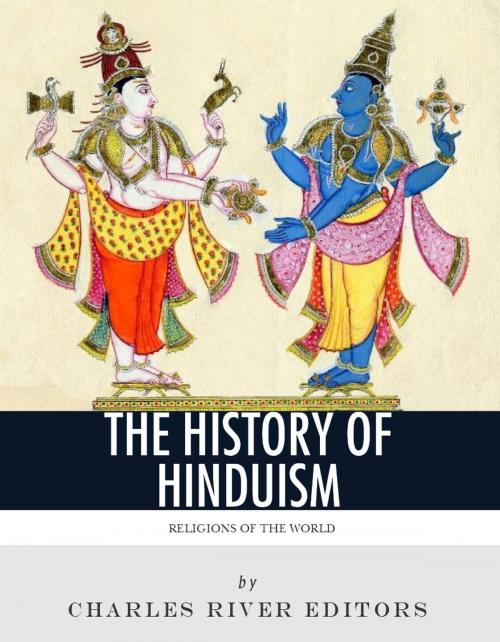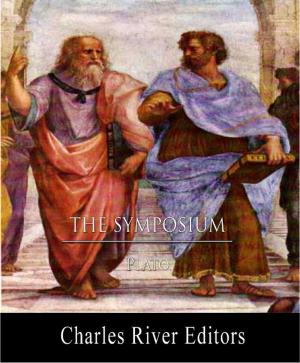Religions of the World: The History and Beliefs of Hinduism
Nonfiction, Religion & Spirituality, Eastern Religions, Hinduism| Author: | Charles River Editors | ISBN: | 9781475321982 |
| Publisher: | Charles River Editors | Publication: | February 22, 2013 |
| Imprint: | Language: | English |
| Author: | Charles River Editors |
| ISBN: | 9781475321982 |
| Publisher: | Charles River Editors |
| Publication: | February 22, 2013 |
| Imprint: | |
| Language: | English |
*Explains the history and origins of Hinduism*Discusses important figures and teachings among different Hindu sects..*Includes pictures *Includes Book 1 of the Hymns of the Sama Veda*Includes a Table of Contents. A lot of ink has been spilled covering the lives of historys most influential figures, but how much of the forest is lost for the trees? Throughout time, people have been religious by nature, and billions today adhere to unique faiths across the world. In Charles River Editors Religions of the World, readers can get caught up to speed on todays religions and yesterdays religions in the time it takes to finish a commute, while learning interesting facts long forgotten or never known. In the West, Hinduism is a religion that everyone has heard of but one that few non-practitioners truly understand. Today it is widely regarded as one of the worlds great religions and considered the indigenous religion of India, with practices and beliefs stretching back thousands of years. However, many of these so-called facts are actually erroneous. Hinduism as it is conceived of today is a conglomerate of a number of indigenous Indian religions; in fact, prior to the migration of Islam and the corporate invasion of the British, Hinduism may not have existed at all. Rather, a number of local religious traditions had very old belief systems dating back hundreds or thousands of years, depending on the tradition, and many worshiped gods that are no longer worshiped today. In essence, it was only through the non-indigenous populations in India, namely the Turks and later the British, who defined what Hinduism was. The British in particular asked only a certain subset of native informants from Bengal "what their religion was" and got a very particular answer, giving rise to the Wests perception of a singular religious Indian tradition known as Hinduism. If the British had not centered their investments in Calcutta, they may have asked a different group of Indians what their religion was and received a different answer, thus changing the popular conception of Hinduism altogether. In other words, Hinduism is as much defined by the non-native "Other" as it is by the so-called native. Hinduism as a religion spans more than 3,000 years, and today it includes nearly 1 billion people. At the same time, it is not a specific term, since there are clear sectarian boundaries, the same way there are differences between Protestantism and Catholicism, and even differences between the various Protestant sects and the various Catholic sects, Hinduism may be broken down into many major sub-groupings that may or may not have much in common at all. Additionally, in the same way Christianity contains many smaller, spirituality heterodox groups like Gnostic Christianity (which are sometimes called cults), Hinduism also contains many groups that have beliefs that do not fit easily within the common corpus of Hindu belief systems. All of these divisions came well after the time of the Aryans, and Hinduism likely began to divide around the 1st century A.D., about 1,000 years after the arrival of the Aryans into the Indian subcontinent.Religions of the World: The History of Hinduism examines the history and main tenets of Hinduism, explaining the way the religion has evolved over time, the similarities it shares with other religions and the differences that make it unique. Along the way, it clears up some of the common misconceptions about the religion, and it includes pictures of important figures and places that will help you learn about Hinduism like you never have before, in no time at all.
*Explains the history and origins of Hinduism*Discusses important figures and teachings among different Hindu sects..*Includes pictures *Includes Book 1 of the Hymns of the Sama Veda*Includes a Table of Contents. A lot of ink has been spilled covering the lives of historys most influential figures, but how much of the forest is lost for the trees? Throughout time, people have been religious by nature, and billions today adhere to unique faiths across the world. In Charles River Editors Religions of the World, readers can get caught up to speed on todays religions and yesterdays religions in the time it takes to finish a commute, while learning interesting facts long forgotten or never known. In the West, Hinduism is a religion that everyone has heard of but one that few non-practitioners truly understand. Today it is widely regarded as one of the worlds great religions and considered the indigenous religion of India, with practices and beliefs stretching back thousands of years. However, many of these so-called facts are actually erroneous. Hinduism as it is conceived of today is a conglomerate of a number of indigenous Indian religions; in fact, prior to the migration of Islam and the corporate invasion of the British, Hinduism may not have existed at all. Rather, a number of local religious traditions had very old belief systems dating back hundreds or thousands of years, depending on the tradition, and many worshiped gods that are no longer worshiped today. In essence, it was only through the non-indigenous populations in India, namely the Turks and later the British, who defined what Hinduism was. The British in particular asked only a certain subset of native informants from Bengal "what their religion was" and got a very particular answer, giving rise to the Wests perception of a singular religious Indian tradition known as Hinduism. If the British had not centered their investments in Calcutta, they may have asked a different group of Indians what their religion was and received a different answer, thus changing the popular conception of Hinduism altogether. In other words, Hinduism is as much defined by the non-native "Other" as it is by the so-called native. Hinduism as a religion spans more than 3,000 years, and today it includes nearly 1 billion people. At the same time, it is not a specific term, since there are clear sectarian boundaries, the same way there are differences between Protestantism and Catholicism, and even differences between the various Protestant sects and the various Catholic sects, Hinduism may be broken down into many major sub-groupings that may or may not have much in common at all. Additionally, in the same way Christianity contains many smaller, spirituality heterodox groups like Gnostic Christianity (which are sometimes called cults), Hinduism also contains many groups that have beliefs that do not fit easily within the common corpus of Hindu belief systems. All of these divisions came well after the time of the Aryans, and Hinduism likely began to divide around the 1st century A.D., about 1,000 years after the arrival of the Aryans into the Indian subcontinent.Religions of the World: The History of Hinduism examines the history and main tenets of Hinduism, explaining the way the religion has evolved over time, the similarities it shares with other religions and the differences that make it unique. Along the way, it clears up some of the common misconceptions about the religion, and it includes pictures of important figures and places that will help you learn about Hinduism like you never have before, in no time at all.















